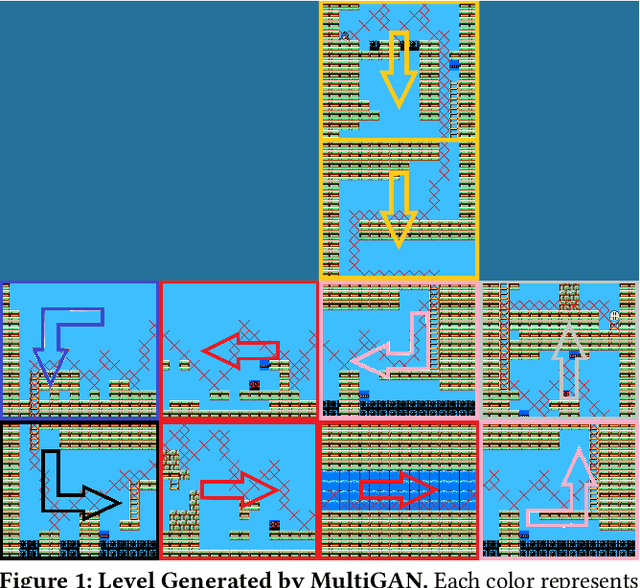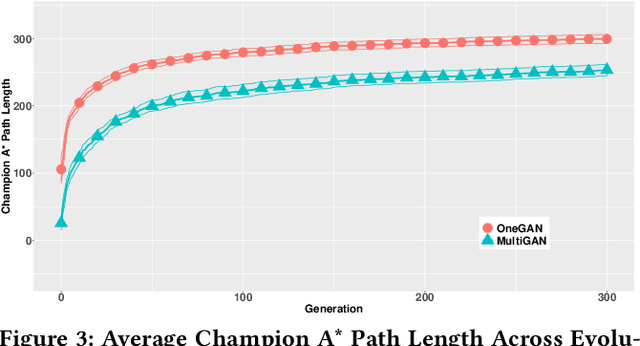Using Multiple Generative Adversarial Networks to Build Better-Connected Levels for Mega Man
Paper and Code
Jan 30, 2021



Generative Adversarial Networks (GANs) can generate levels for a variety of games. This paper focuses on combining GAN-generated segments in a snaking pattern to create levels for Mega Man. Adjacent segments in such levels can be orthogonally adjacent in any direction, meaning that an otherwise fine segment might impose a barrier between its neighbor depending on what sorts of segments in the training set are being most closely emulated: horizontal, vertical, or corner segments. To pick appropriate segments, multiple GANs were trained on different types of segments to ensure better flow between segments. Flow was further improved by evolving the latent vectors for the segments being joined in the level to maximize the length of the level's solution path. Using multiple GANs to represent different types of segments results in significantly longer solution paths than using one GAN for all segment types, and a human subject study verifies that these levels are more fun and have more human-like design than levels produced by one GAN.
 Add to Chrome
Add to Chrome Add to Firefox
Add to Firefox Add to Edge
Add to Edge